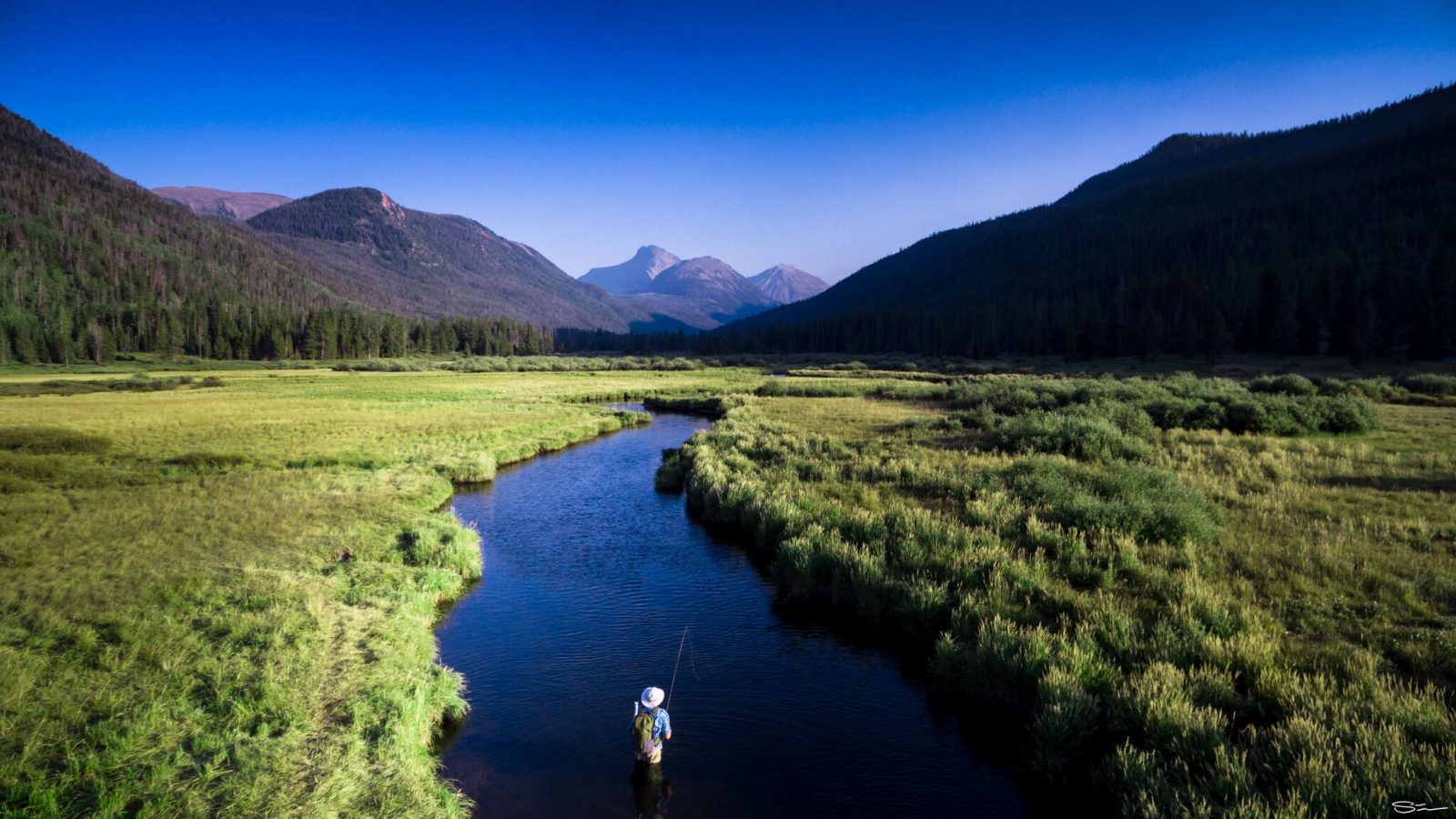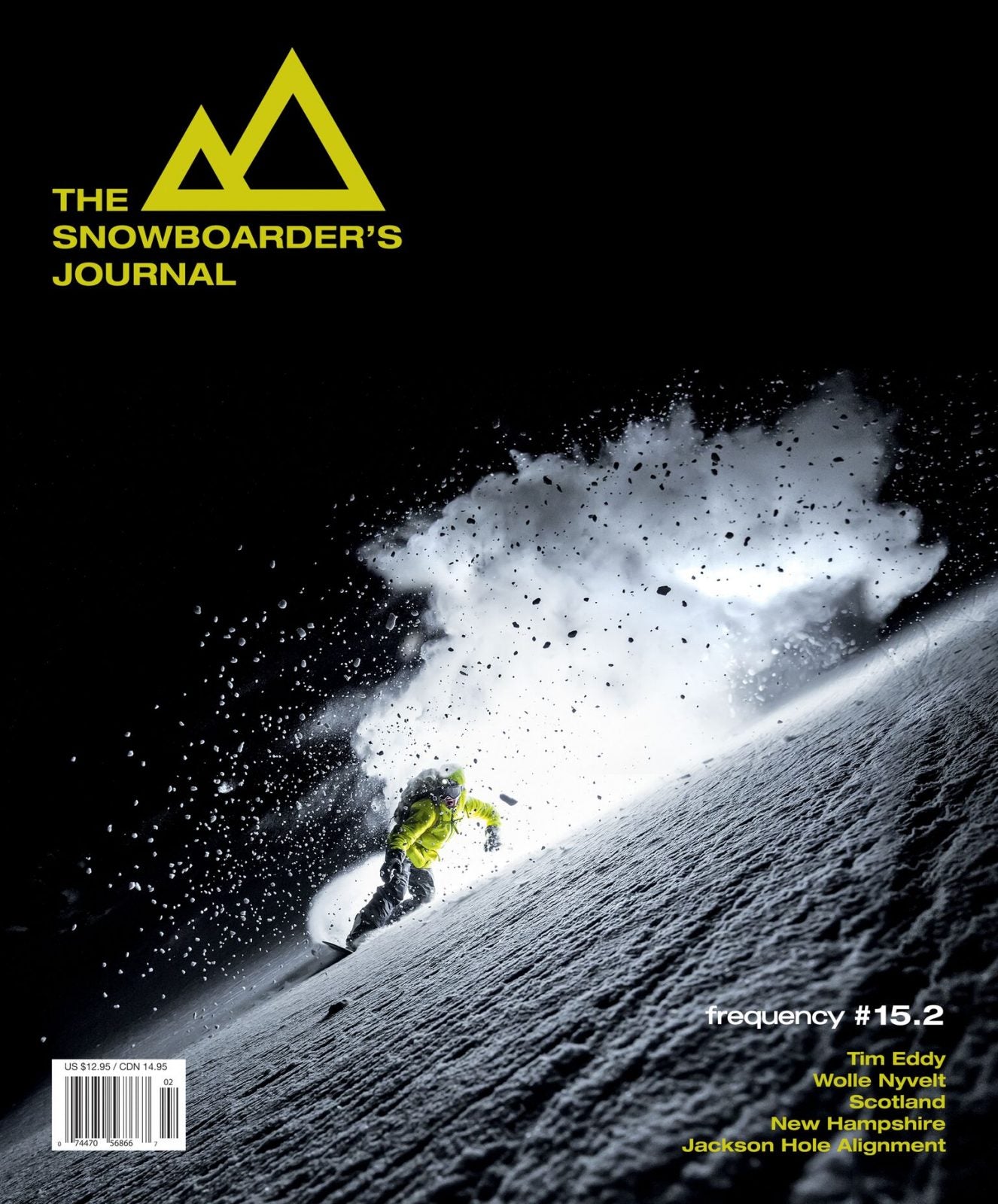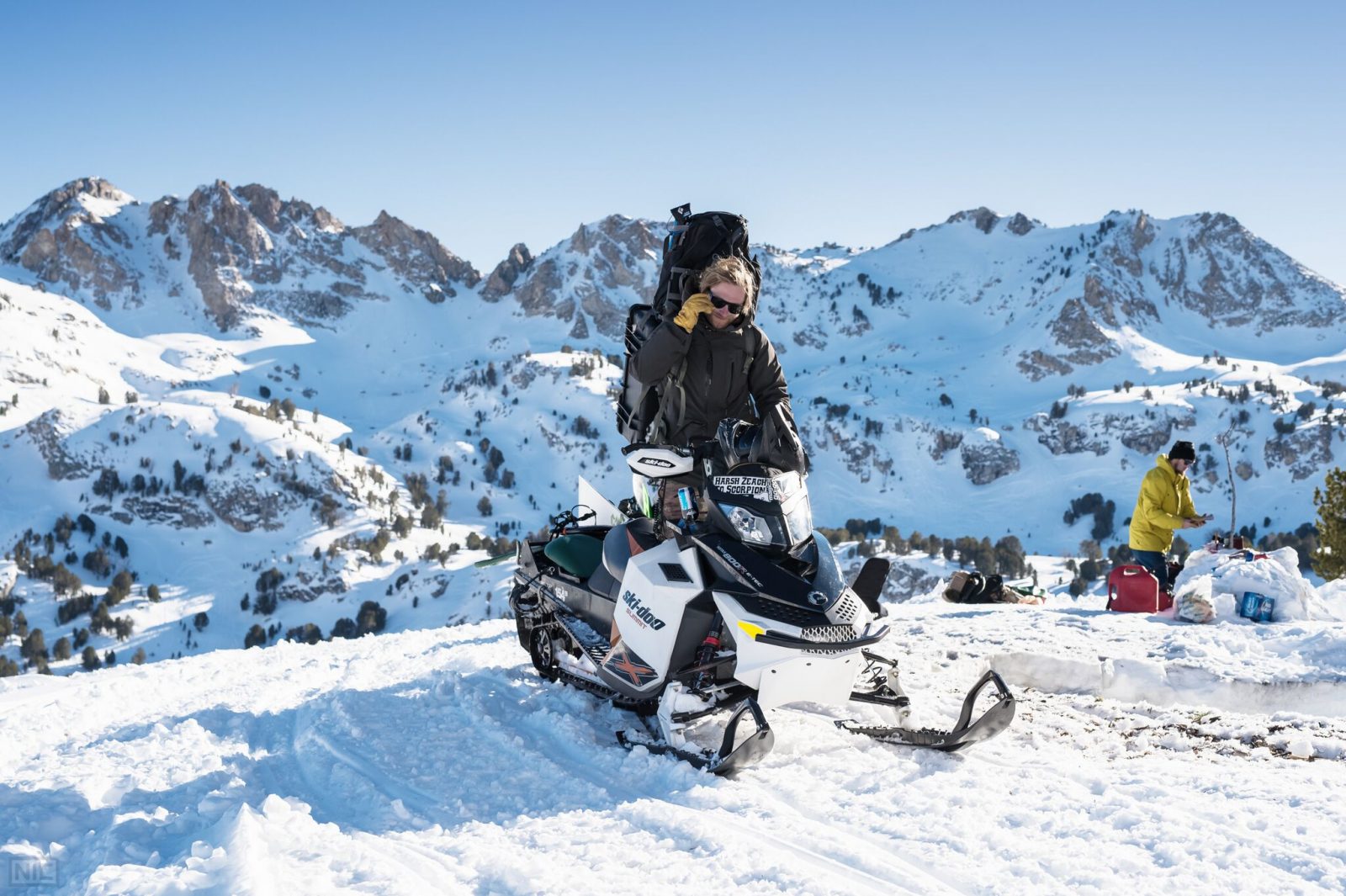
Today, we're taking you on a wild and adventurous ride with our featured action sports photographer Sean Sullivan! Whether he's in the Alps shooting some of the most famous snowboarders in the world or capturing the Grand Tetons during last summer's solar eclipse, Sean will never back down from a quest to capture an image that will captivate his audience. Read more about his evolution as a photographer, who and what influences his art, and hear some of the most mind-blowing stories about some of the shots he's gotten, starting with his most recent one in Alaska that earned him a front-running spot in the Winter X-Games 2018's ZOOM action photography competition!
First off, congrats on being a finalist in the X-Games ZOOM contest! Walk us through your shot (below) that got you in the running.
Last April, John Jackson, his brother Eric, and myself ended up in Valdez, Alaska with the intent to snowmobile and heli with ASG (Alaska Snowboard Guides) and film an episode of John's RedBull TV show, "The Book of John J". On our third day, we found this wind lip hanging off of the side of a glacier with a perfect landing beneath it. John crossed some pretty crazy glaciated terrain to get into position to hit it, and it turned out to be one of the craziest features we have ever shot. Ultimately, John got hurt on this feature, which actually became a pretty heavy situation. We had snowmobiled about 40 miles from our camp at ASG to that area, and now he could not pilot his snowmobile back to camp. It was so late in the day and we were on a glacier. The ASG heli was already shut down for the day, and normally the pilot drives home, but on this day, we got super lucky. The pilot had flown the bird back to town, so he was able to get back in the chopper, fly up to the ASG camp and pick up a guide, and rescue John just before it was too dark to fly in the mountains. The rest of the crew snowmobiled home across the glaciers in the last light of the day, and we didn’t make it back to camp until midnight.

What kind of gear do you usually take with you when you’re doing these kinds of action shots?
A fast full-frame camera (Canon EOS 1Dx), a range of Canon lenses (15mm fisheye, 50mm, & 70-200mm telephoto are my first three go-to’s), and a good pair of boots and sunglasses. Elinchrom ranger flashes are also in heavy rotation, as well as polarizing filters that are nearly mandatory on those bright bluebird days on snow and water. They can also take sunsets to the next level.
Who are some snowboarders that you’ve enjoyed shooting the most?
I just enjoy working with riders who are enthusiastic and who also enjoy and appreciate photography. When you get a combo like that, it makes the flow really easy. You don't always have to have the craziest terrain or trick to get a good photo, just good communication in the crew.

When you’re buying new gear, what features do you look for in your equipment?
I look for gear that’s built to last. I don't like to spend hard-earned money on products that are designed to fail after one season of use. I push myself and my gear to the limit and the best photos almost always get created in inclement conditions. If you're out shooting and everyone else is indoors or asleep, you're one step ahead of the game. I have been fortunate in that Canon makes gear that is so weatherproof and has so much longevity.
What started your passion for photography?
I’ve been shooting photos since I was a little kid. My parents used to give me disposable cameras while we would travel, and I bought my first SLR with my first paycheck when I was about 12 years old, so I've been in photography 20+ years. I got into it because it was just fun, the camera is a magical device, that it is able to capture light and memories. Its power still blows my mind to this day. I did poorly in high school, I mean, my grades were actually pretty good, but I cut school so much to go surf and snowboard that I had to make up credits at a nearby community college. When I found out photography was a class that qualified, I tripped out. I mean, nobody ever told me photography was a legitimate subject you could study in college. It was like, wait…photography is taught alongside law, science, and math? I learned that photography can be applied to anything. We can explore any of our interests or passions with a camera, and that it can open doors that nothing else can. That was a big revelation for me.

Which photographer has influenced you the most and how have they influenced you?
Ethan "E-Stone" Fortier has been my biggest influence, as he took me in under his wing and mentored me from the early days of my career. Shooting snowboarding sounds simple but to make a living out of it, its a psychedelic chess game that requires a lot of patience, hard work, technical excellence, scouting, strategy, business, and sheer luck. E-Stone taught me a lot. He has become like a brother to me, and it’s funny, I’ll be editing photos at 3am, and when the phone rings, I don't even have to look to know it’s him. We are on the same wavelength when it comes to our process. When I call him to ask him a question or to show him something new I’ve found, half the time he can finish my sentence for me. I thinks it’s really an important thing for photographers to have a friend like this, to respect and to learn from those that came before you, and to share the things we know with the next generation.

What's your shooting style and how have you cultivated it over the years?
Ansel Adams + Nat Geo + Jackson Pollock + The X-Games? I can't really describe my style, but I strive to create distinct images that really speak 1,000 words. I earned a BFA in Photography at the University of Utah, and the history of art and photography was emphasized in our curriculum. I respect the work that paved the way for today's photographers, and out of respect for those who came before me, I want to create original images that no one else can. I will not copy other people and take credit for their ideas. The phrase "story-teller" is so played out these days. I see so many photographers who overpower their work with 1,000 word captions, or who post more selfies than thought-evoking photos. I'm not into the "hey look at me I am cute" game that people play on Instagram. I believe if you're a photographer, it's your duty to put captivating things in front of your lens and bring that to the world.
Besides building your photography business, what else motivates you to continue taking pictures?
Its all passion, it's never been about the business. A nice photo can make a lot of people happy, and I love happy people. As a photographer, I have a voice. I am a public servant. I want to lift up my friends, protect and defend what's right, and promote the beauty and light that can make a positive impact on our world.

What’s the shot that you're most proud of?
I have so many, but two from the last year come to mind. The first is this photo of Forrest Shearer (below) that made the cover of The Snowboarder's Journal. I had been working on the night pow series for about eight winters, and it's a very slow and technical process. Last season, I finally got the photo to look the way I could see it in my mind, and it ended up as a cover. Pure satisfaction.

The other image is my photo of the great American solar eclipse from this past summer. The image below is a test image from my recon mission preceding the eclipse event. Totality passed directly over the Grand Teton in Jackson, WY, so I knew this was a huge opportunity, as The Grand Teton is the most photographed mountain in America, if not in the world, and this spectacular lighting event wouldn't happen here again for 400 more years. I also knew that I wasn't the only photographer who would be drawn to this event, so if I was going to invest in it, I'd have to go huge and do something really different.

People are predictable, so I knew there would be thousands of cameras on tripods pointed directly at the sun, so that option never hit the table. When it comes to photography and the Tetons, Ansel Adams' photo of the Snake River with the Grand Tetons looming in the distance is still the most iconic image ever taken in Jackson. I wanted to pay tribute to the master and have the river and mountain be the main elements of my image. Nobody can replicate his shot, as the trees have grown so much that that view doesn't exist anymore. As I thought about the layout of the river and mountain, and physics of the eclipse, the umbra (the moons shadow) would sweep across the land from East to West at 2000mph, and I realized that with the distance between the mountain and river, there would be a brief moment before totality when the river would be in daylight, while the Tetons would be in the darkness of night. But the big question was would the shadows edge be sharp enough to distinctly show day and night right next to each other? I wanted to capture the edge of day and night in one frame, that paid tribute to Ansel's work with a similar composition. A boom truck parked at the site of Ansel's photo would get above the trees and reveal the river, but research on Google Earth proved it wouldn't be high enough to distinctly show the shadow on the savannah. I didn't want to deal with traffic, and I knew every spot with a good view of the grand would be packed with people, so there was only one option: to take to the air. I contacted dozens of pilots and reserved aircraft at a half dozen different airports in Utah, Idaho, and Wyoming. There was no telling what the weather would do, much less the traffic, so even my backup plans had backup plans. I left SLC 36 hours in advance with a few days worth of food, three gerry cans of fuel, and my bicycle. I was prepared to leave my truck on the side of the road and ride my bike to the airport if I got caught in gridlock. I ended up choosing to fly over from Idaho and in the hours leading up to the eclipse, I boarded a 4 passenger plane from the 70's and crossed the Tetons. Our first lap around the area I envisioned shooting my photo from revealed the exact composition I was looking for, so we did a few more passes, timing our laps and playing with our heading and elevation. The eclipse would be moving faster than a fighter jet, and I had to communicate with the pilot and find a way to maneuver our plane into the exact position I wanted in hit a three second window. I have never went into an experimental photoshoot with so many unknowns, (mid air collisions, thermal winds taking down the plane, weather, traffic, the actual sharpness of the umbra, finding and hitting our angle at the right time, etc.) but I trusted my vision. We ended up hitting our mark perfectly. The photo turned out better than I imagined, and I created two one-of-a-kind images of the most photographed mountain in North America. I captured my vision of totality approaching, and during totality, I captured an image that I never dreamed of. There were no other aircraft in the area, which was surprising with how aggressive photographers are these days, it's still hard to believe I was alone with this vision. It's rare these days to create an image that can never be reproduced, so this is an absolute lifetime/career-high for me. The images have not been publicly released, but a limited edition of fine art prints will be available at The Rare Gallery in Jackson early this summer, along with more affordable poster prints on my website and at select retailers in Jackson, WY.
Make sure to check out Sean's website and follow him on Facebook and Instagram!

